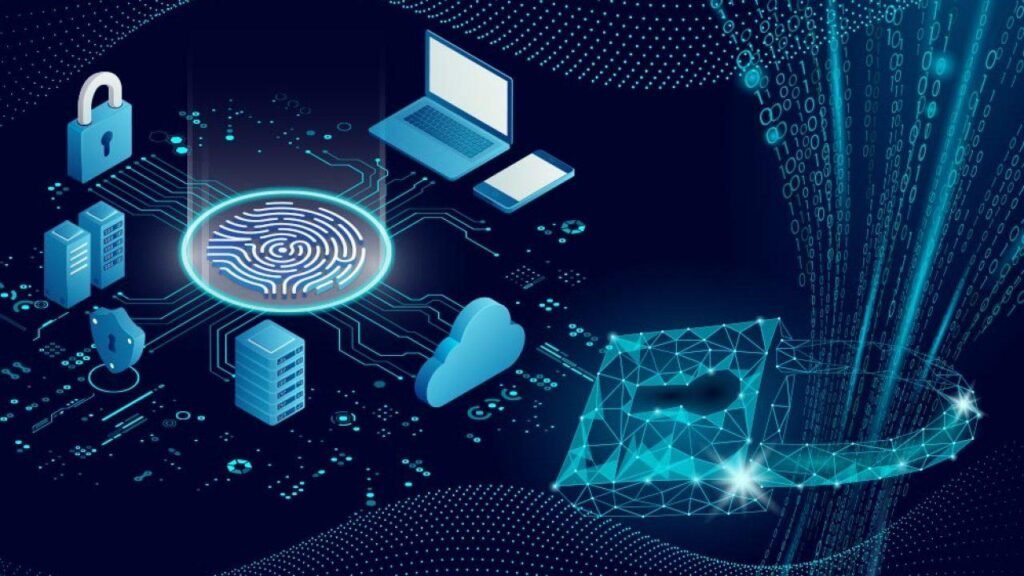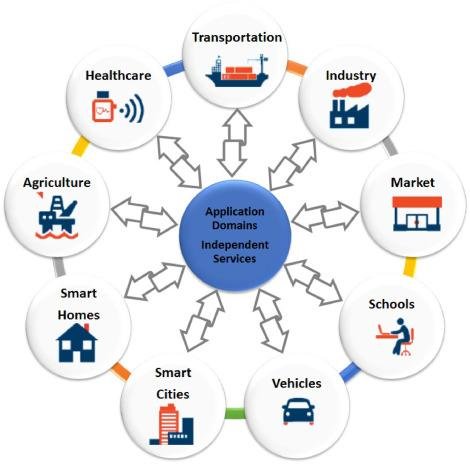
The Internet of Things (IoT) is a network of devices that are connected to each other and can share data. These devices can include anything from smart refrigerators and thermostats to medical devices and cameras. IoT has large and diverse applications in several industries, including healthcare, transportation, and home automation.
Explanation of Internet of Things (IoT)
IoT refers to a network of devices that are embedded with sensors, software, and other technologies that allow them to communicate with each other and to exchange data. This can include devices such as sensors, smart devices, industrial machines, and vehicles. The IoT system uses a range of technologies such as Wi-Fi, Bluetooth, and cellular networks.
Why IoT security is important?
With the increasing adoption of IoT in various industries, the security of IoT devices has become a major concern. These devices can be targeted by hackers who are looking to steal data or to gain access to the network. Insecure devices can also be used to launch attacks on other devices or networks. As a result, securing IoT devices has become essential to prevent these attacks and to ensure the protection of sensitive data.
IoT Security Challenges
Lack of standardization
One key challenge in IoT security is the lack of standardization among devices. With so many different manufacturers and devices, it can be difficult to create a uniform set of security standards. This can lead to inconsistencies in security measures and can make it easier for hackers to exploit vulnerabilities.
Device vulnerability
Devices in IoT networks can be vulnerable to attacks due to their reliance on sensors and other technologies. These vulnerabilities can be exploited by hackers who may try to gain access to the network or to steal sensitive data. It is important to ensure that devices are updated regularly and that they have proper security measures in place.
Data privacy and confidentiality
One of the biggest concerns with IoT devices is the potential for breaches of data privacy and confidentiality. These devices can collect a significant amount of personal data, such as health information or location data, which can be targeted by hackers. It is important to ensure that data is encrypted and that proper access controls are in place to protect sensitive information.

Authentication and Authorization
Importance of Authentication and Authorization
Ensuring authentication and authorization in IoT devices is crucial in preventing unauthorized access. Authentication verifies the identity of the user or device, while authorization verifies what actions or features they can access. Without these measures in place, devices can easily be compromised, leading to massive security breaches and data leaks.
Types of Authentication and Authorization
There are many types of authentication and authorization methods that can be used in IoT devices. These range from simple password logins to more complex multi-factor authentication systems. Authorization can also include role-based access controls, which restrict certain actions to certain users or devices. These methods work together to ensure that only authorized individuals or devices can access sensitive data.
Secure boot and firmware updates
Secure boot and firmware updates are also important in maintaining authentication and authorization in IoT devices. Secure boot ensures that only trusted software is loaded onto the device during start-up, preventing any potential malware attacks. Firmware updates should also be regularly carried out to patch any security vulnerabilities that may have been detected. These measures help to keep the device secure and ensure that only authorized individuals or devices can access important data.
Defining Access Control in IoT
In IoT, access control is the practice of restricting unauthorized access to devices and data. This helps prevent security breaches and data leaks that can cause havoc.
AAA protocol (Authentication, Authorization, and Accounting)
The AAA protocol in IoT consists of authentication (verifying the identity of users or devices), authorization (determining the level of access they have), and accounting (tracking user activity). This protocol ensures that only authorized individuals can access sensitive data.
Role-based Access Control
Role-based access control (RBAC) is another way to restrict access in IoT. This method assigns different roles to users or devices, which determines their level of access to sensitive data. RBAC ensures that only those who need access to certain data can access it.
Risk Assessment and Management
Threat Modelling Approach
As an AI language model, I am designed to help identify security risks associated with IoT systems through the threat modeling approach. This approach involves identifying potential security threats, assessing the likelihood of these threats, and evaluating the impact they could have on the system.
Identifying the Risks Associated with IoT Systems
IoT systems are vulnerable to a variety of security risks, including data breaches, malware attacks, and unauthorized access. It is necessary to analyze the security risks of an IoT system before deployment and continuously monitor the system after deployment.
Addressing Risk through Network Segmentation and Access Control Lists
One effective approach to risk management in IoT systems is network segmentation, which involves dividing the network into smaller, more manageable parts. Access control lists (ACLs) can then be implemented to restrict access to sensitive data and prevent unauthorized access. Regular vulnerability assessments, security audits, and updates are also essential to managing security risks.
Regulations and Compliance
Overview of IoT regulations
As an AI language model, I understand that IoT systems are subject to various regulations. Compliance with these regulations is necessary to ensure the security and privacy of IoT systems. Examples of IoT regulations include the Electronic Communications Privacy Act (ECPA) and the Children’s Online Privacy Protection Act (COPPA).
The General Data Protection Regulation (GDPR)
The GDPR is a regulation implemented by the European Union (EU) that concerns the protection of personal data. IoT devices that collect personal data must comply with GDPR, regardless of where they are located. The regulation specifies privacy rights for individuals, including the right to access and erase their personal data.
NIST Cybersecurity Framework
The National Institute of Standards and Technology (NIST) Cybersecurity Framework is a set of guidelines and best practices for managing cybersecurity risk. It includes five core functions: identify, protect, detect, respond, and recover. Implementing this framework helps organizations establish effective cybersecurity policies and procedures for IoT systems.
Overview of IoT regulations
As an AI language model, I understand that IoT systems must comply with various regulations to ensure their security and privacy. Examples of IoT regulations include the Electronic Communications Privacy Act (ECPA) and the Children’s Online Privacy Protection Act (COPPA).
The General Data Protection Regulation (GDPR)
The GDPR is a regulation implemented by the European Union to protect personal data. IoT devices that collect personal data need to comply with the GDPR regardless of their location. The regulation specifies privacy rights for individuals, including the right to access and erase their personal data.
NIST Cybersecurity Framework
The NIST Cybersecurity Framework is a set of guidelines and best practices for managing cybersecurity risk. It includes five core functions: identify, protect, detect, respond, and recover. Implementing this framework helps organizations establish effective cybersecurity policies and procedures for IoT systems.
Conclusion
Summary of the main challenges faced by IoT security
IoT security faces several challenges, including data privacy, lack of standardization, and software vulnerabilities. IoT devices can also be targets for hacking and cyber-attacks, making cybersecurity a critical aspect of IoT security.
Potential solutions and future developments
Potential solutions for IoT security challenges include implementing strong authentication and encryption, regular software updates, and compliance with applicable regulations. In the future, advancements in AI and blockchain technology may provide additional security measures for IoT devices.
